It was a calm morning after a three day storm at our anchorage in Kukak Bay when we made the decision to beat a forecasted gale and travel for three hours down the Katmai Coast to see if a rumored beached whale was still ashore and attracting a number of coastal grizzlies and wolves. We didn’t beat the wind, but our ship—Natural Habitat Ursus, a converted Bering Sea crab boat—is built for travel in all conditions. We made it comfortably through a southwest wind of 30 knots and seas of six feet. About halfway through the trip we noticed an amazing rainbow leading us in the direction of our destination. I took this as a good omen. I was right.
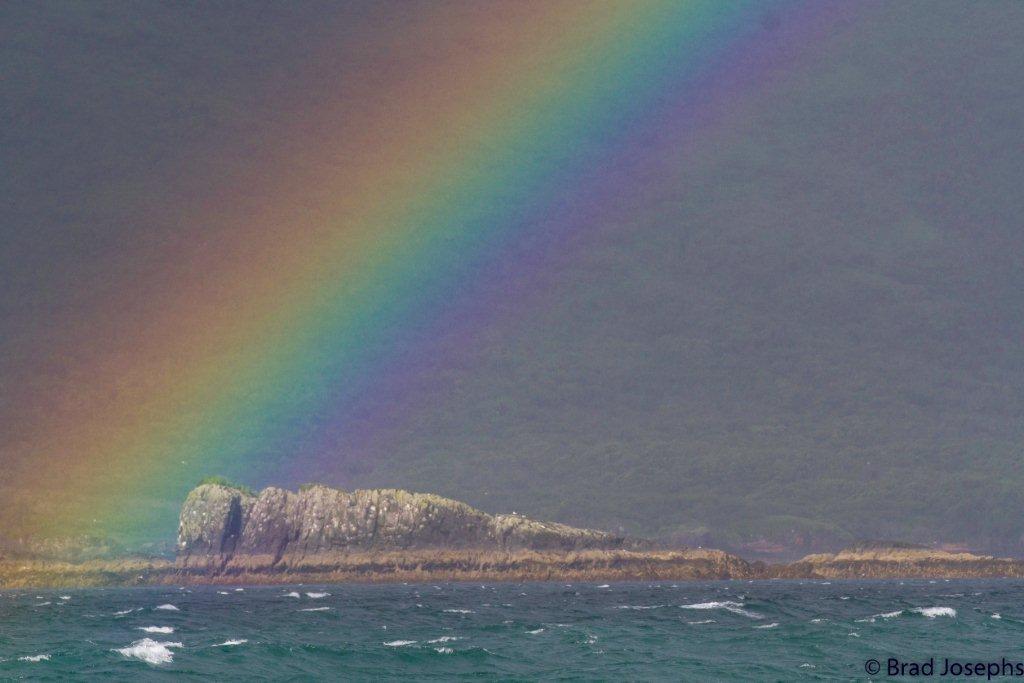
Somewhere at the end of this rainbow lies a whale carcass, a dozen bears, and three wolves.
We spotted the whale, which in the distance was almost invisible as it matched the color of the white beach gravel, by the dark brown shapes clustered around it—seven grizzlies. I had not seen a whale carcass in six years on the Katmai Coast, but the reports of an unusual whale die off in the region had kept my eyes and ears on alert in case one showed up near us. The deaths, likely caused by toxic red algae in the much warmer-than-usual waters, are very sad events. But, if a carcass washes ashore on the Katmai Coast not a calorie goes to waste, as it becomes an amazing food source for bears, wolves, wolverines and scavenging birds.
There is no food on earth more attractive to bears than whale blubber, and the strong scent draws them in from many miles around. Blubber is what keeps marine mammals warm in cold water, and in whales it can be a foot thick. The lipid content and blood vessel concentration of blubber is much higher than other fatty tissues in nature, which makes it a better insulator for a living whale, and incredibly nutritious for scavenging bears.
As we approached the whale and dropped anchor, I studied the scene with my binoculars and counted three wolves among the bears. This was going to be something! We loaded the skiff with our bear viewers and headed closer. There was about 1/3 of the original carcass left, about a quarter of the size of a shipping container.
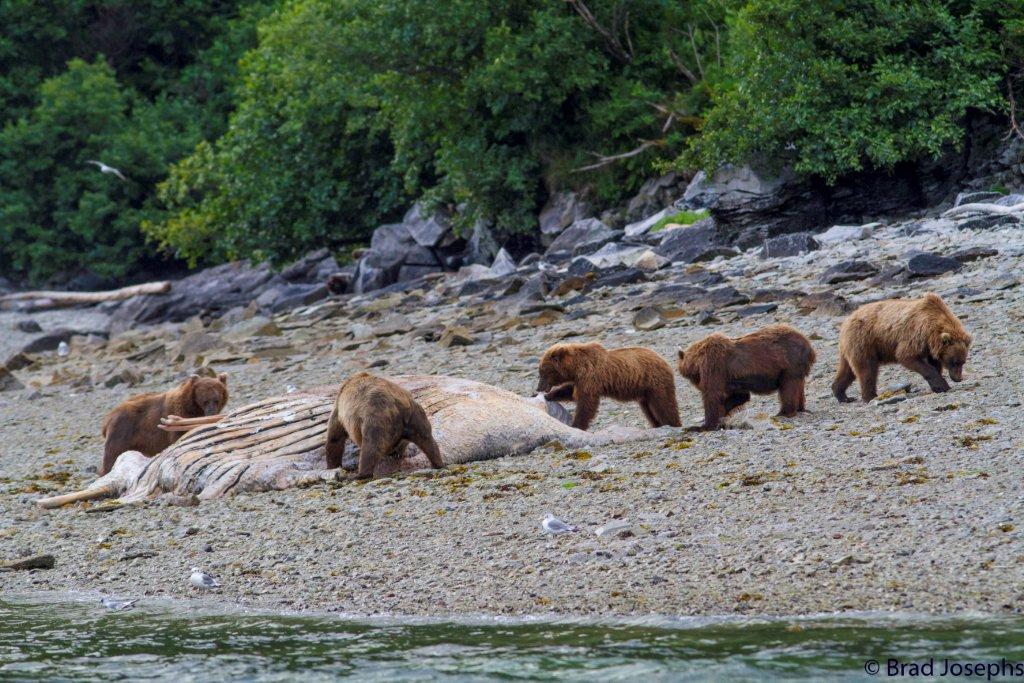
Altogether there were a dozen bears in the immediate area.
A very complex and dynamic hierarchy quickly develops when multiple bears have found a whale carcass. These bears on the coast have evolved special social skills and what I call “personal space flexibility.” They can share concentrated food sources, like a salmon stream, with other bears, rather than spend too much energy in competition. We saw as many four bears eating on the whale at one time, and on several occasions, a wolf and a bear feeding together.
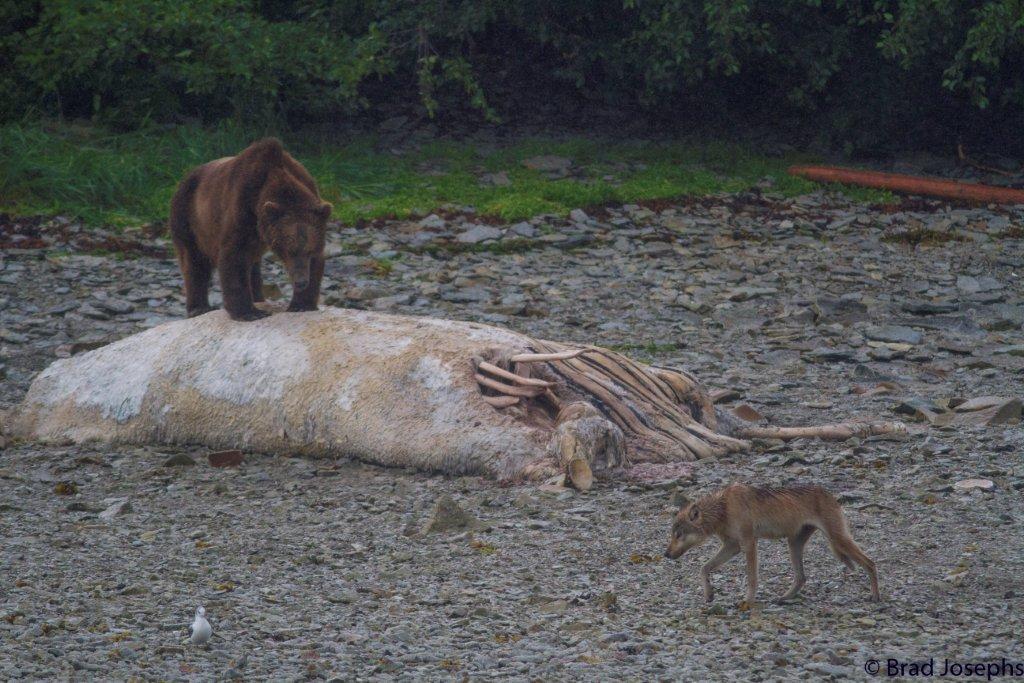
A bear and a wolf, peacefully sharing the whale carcass.
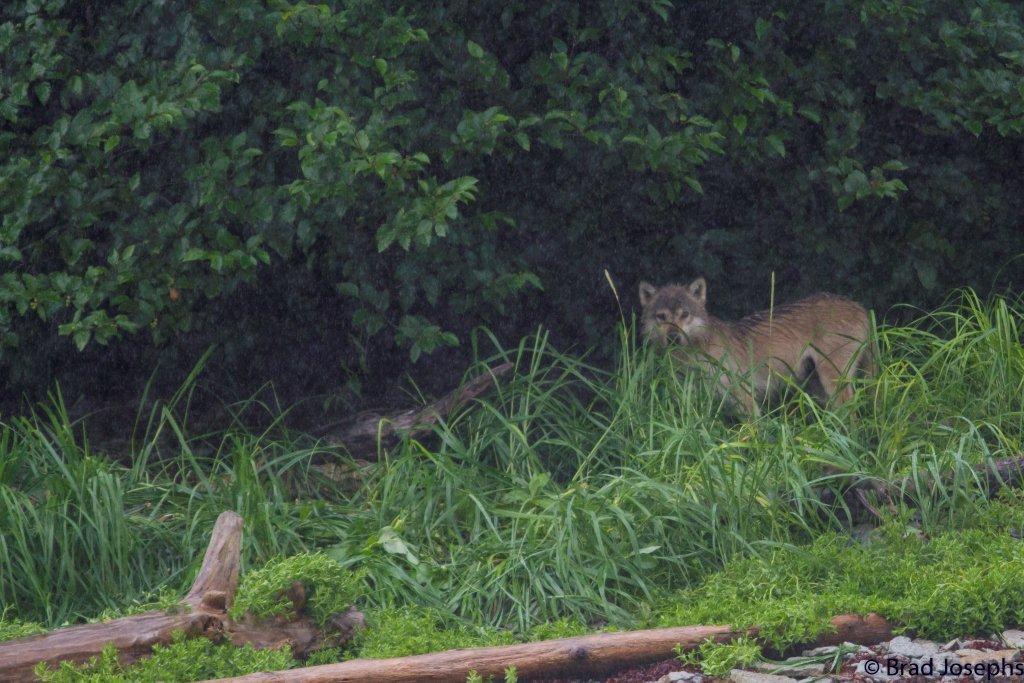
Waiting in the sidelines to make his move.
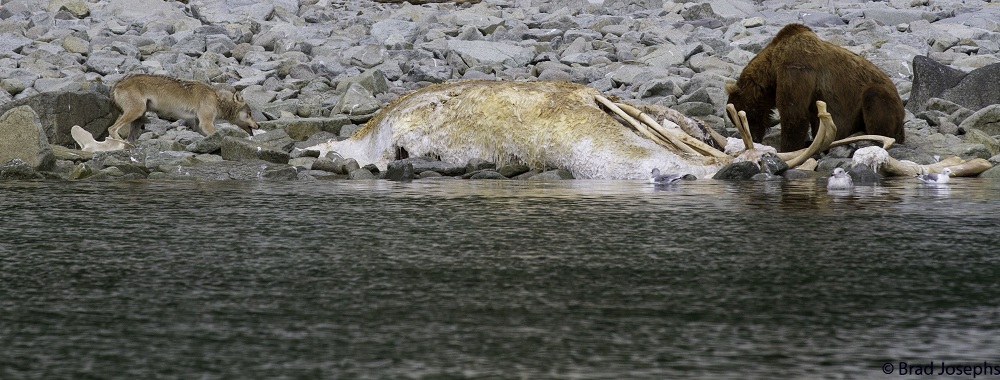
Most of the bears were mellow and didn’t mind sharing, but during the several days we spent there we saw several giant males (at least 1,000 pounds) who weren’t so tolerant. When one of these big guys was eating, the younger bears and females had to sit out until he was full and fast asleep. When more than one big guy was hungry at the same time, they had to decide who the real “carcass boss” was. In the following video we see the most aggressive bear in the neighborhood, who we called “Bully,” attack a brazen dark female who didn’t get out of his way. I have known this particular female for many years, and we call her “Scrunch” because her nose appears scrunched up from being ripped in half during a fight many years ago. She is an older, experienced female who was one of the mother-bear-stars in the BBC/Discovery Channel documentary Great Bear Stakeout that the Ursus crew and I worked on 3 years ago. When these two bears met, instead backing off, she roared at him and “Bully” suddenly reared up, grabbed her by her scalp, and began dragging her towards the ocean. I recognized this as “Bully” wanting to kill “Scrunch” by drowning her, and she knew it too. In an amazing, calculated move that reminded me of a “reversal” from my high-school wrestling days, she spun out of his grip, and popped him in the face with the powerful swat that grizzlies are famous for.
In the second fight, we had seen “Bully” and another male of similar size posturing to each other to vie for dominance. The tensions were high, and a fight between them was imminent for sure. Instead, “Bully” attacks a blond female with a third summer cub. “Bully’s” sheer size, and the proximity to the water’s edge, made for a grave situation that I thought would be fatal for the mother bear. But out of nowhere, the competing male charges and fully engages with “Bully.” This male did in fact save the mother bear from a likely death, but who knows why he did it. Was he trying to be a hero? I think he saw an opportunity at gaining an upper hand on his competitor while he was distracted, but with an animal as complex as a grizzly bear, you can’t know for sure, and that’s what makes watching bears so amazing.
Click through the slideshow below to see more photos of grizzlies with the whale carcass.
Witnessing bears feeding on a whale carcass conjured up a mixed bag of emotions from the travelers on this Alaska expedition. It was a different world from, say, watching a mom and three spring cubs play and nurse in a flower-filled beachside meadow at sunset, but we loved it just the same. It was one of the rawest, most violent things I have ever seen in my lifetime of observing nature, but there was beauty there on many levels. The death of a fin whale due to high oceanic temperatures is very distressing, but for the bears and the wolves, it was an amazing, unexpected gift from the ocean, which for some could mean the difference of surviving another year. For me, it is what wildlife expeditions are all about—appreciating, respecting and learning from that which is humbling, beautiful, scary and beyond our control.

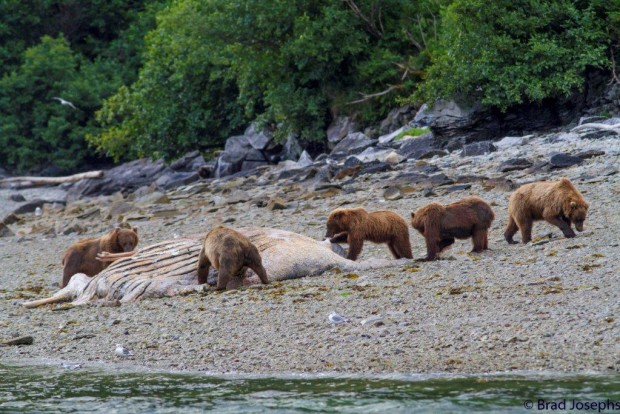
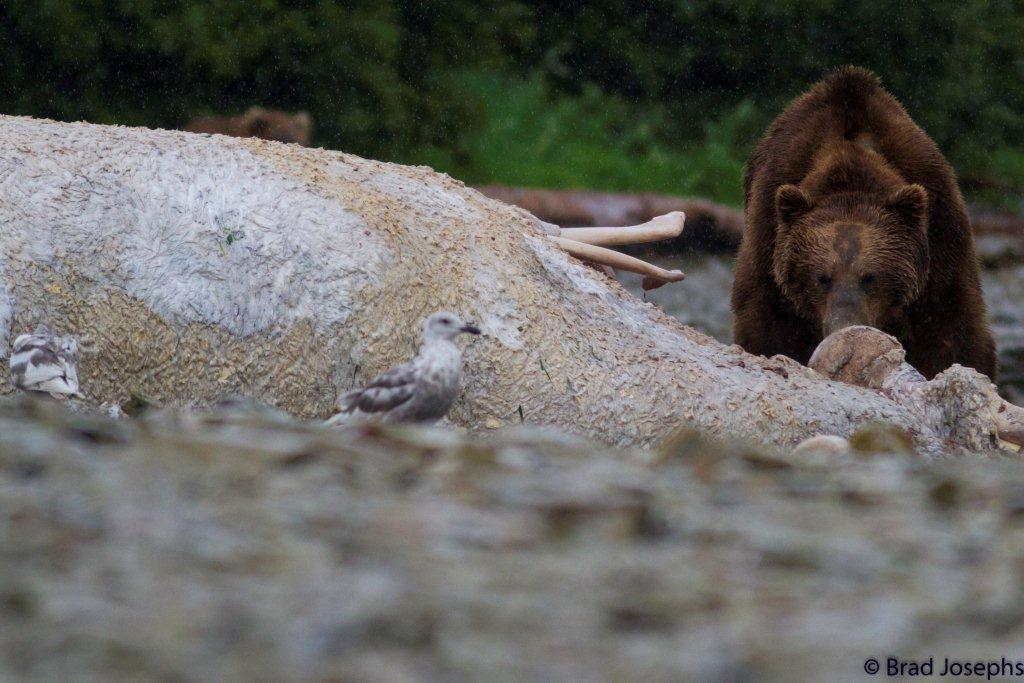
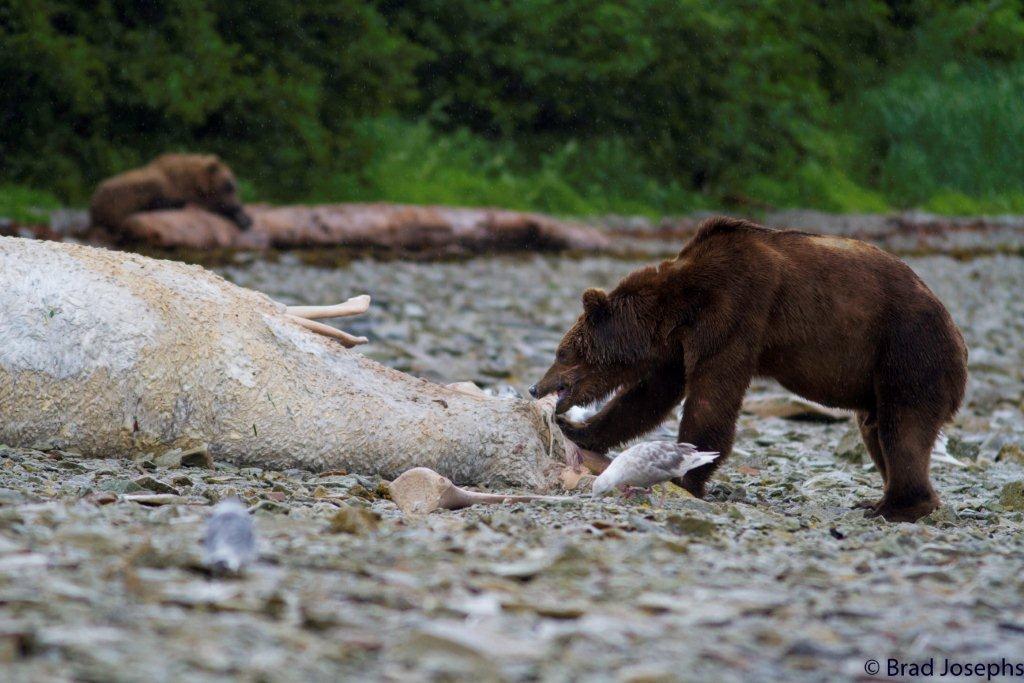
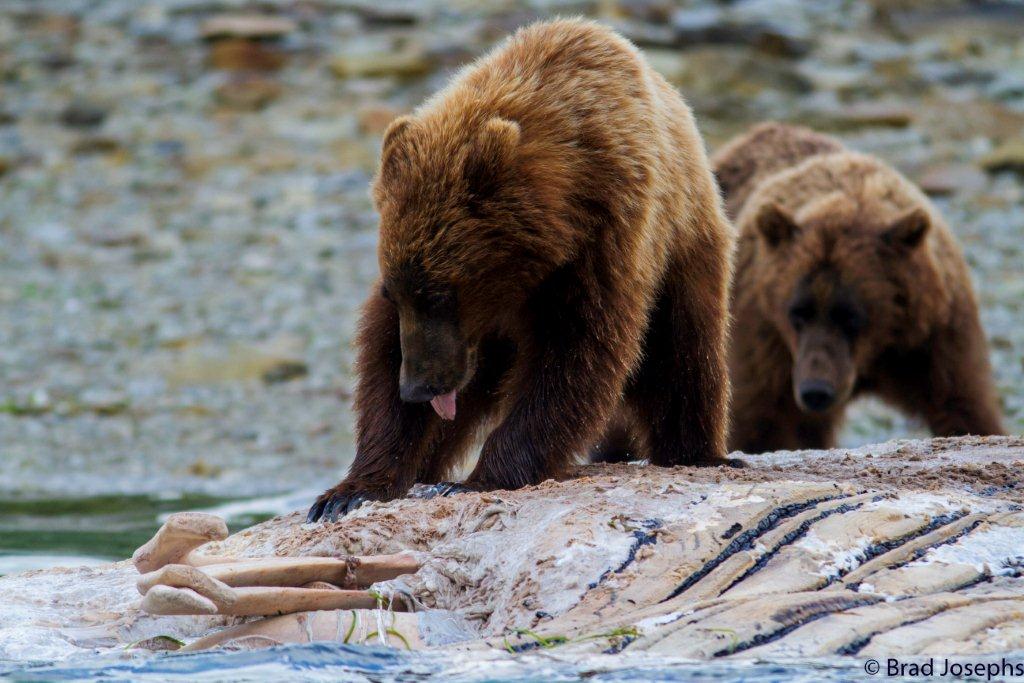
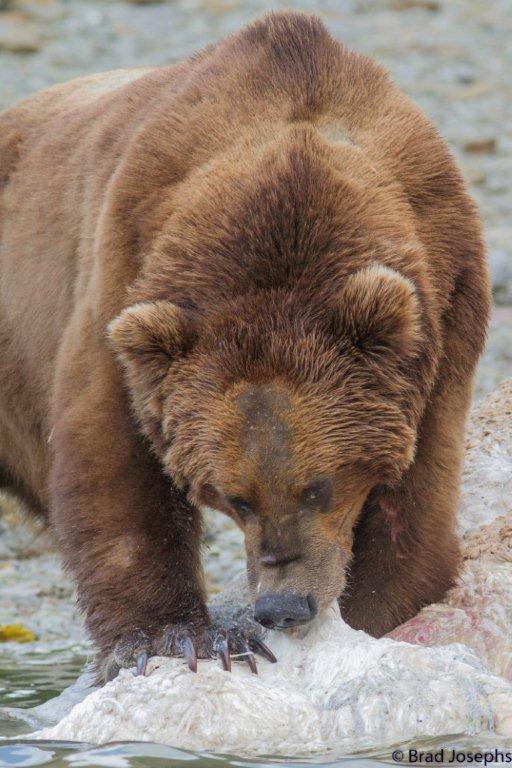
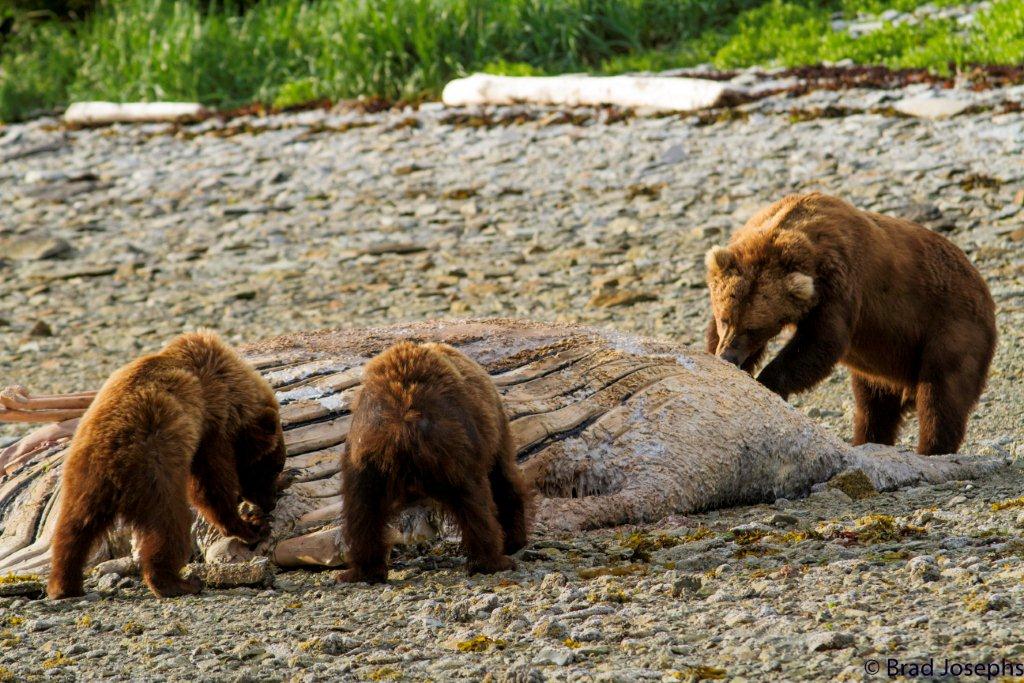
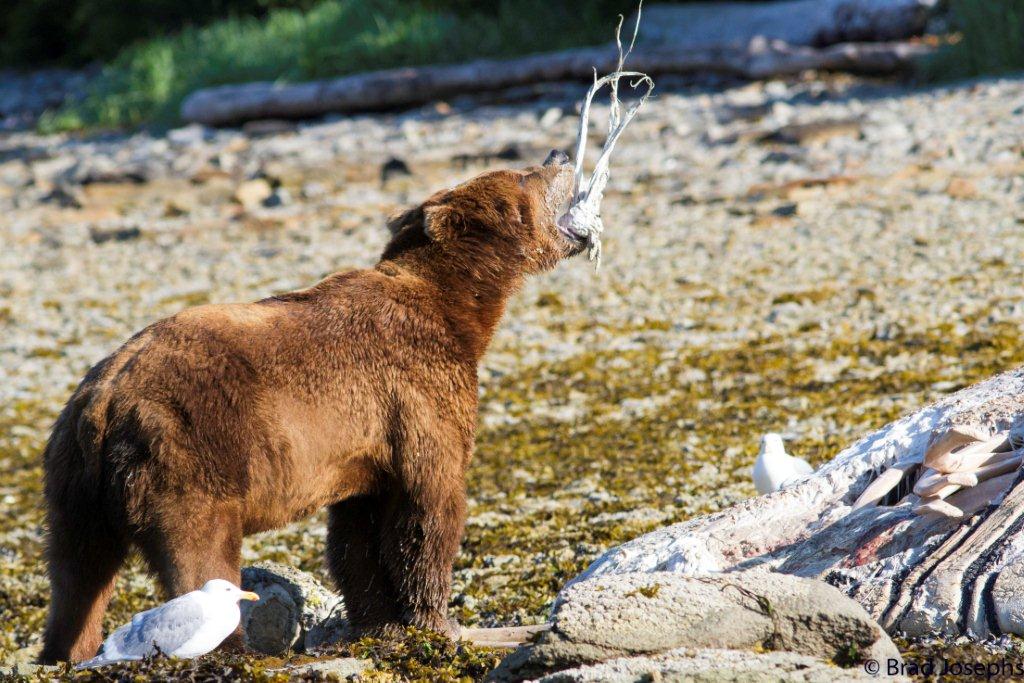
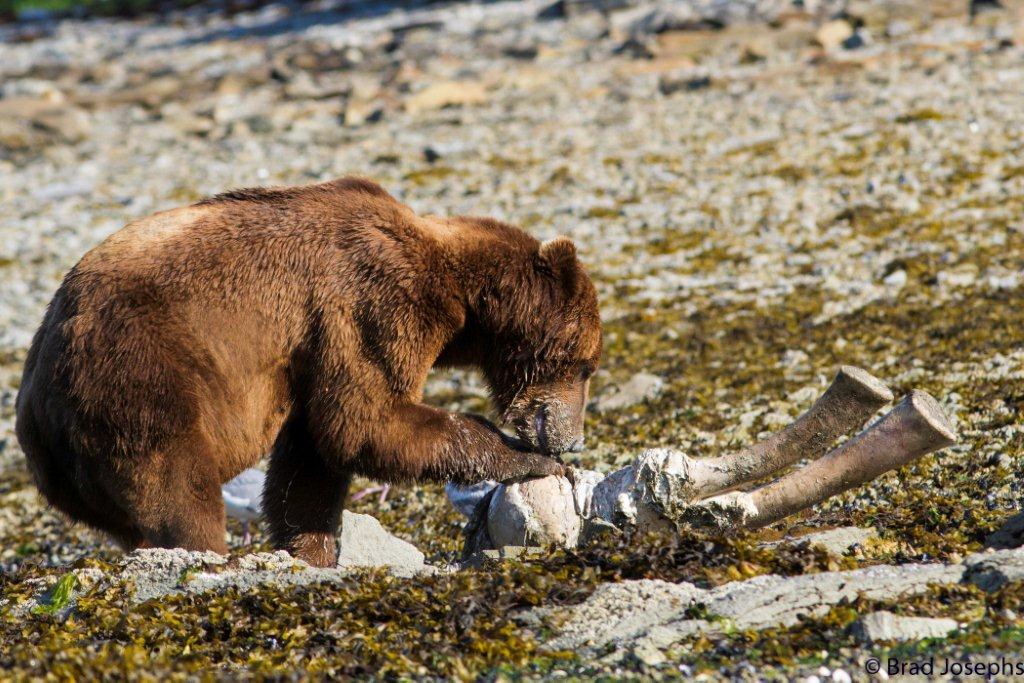
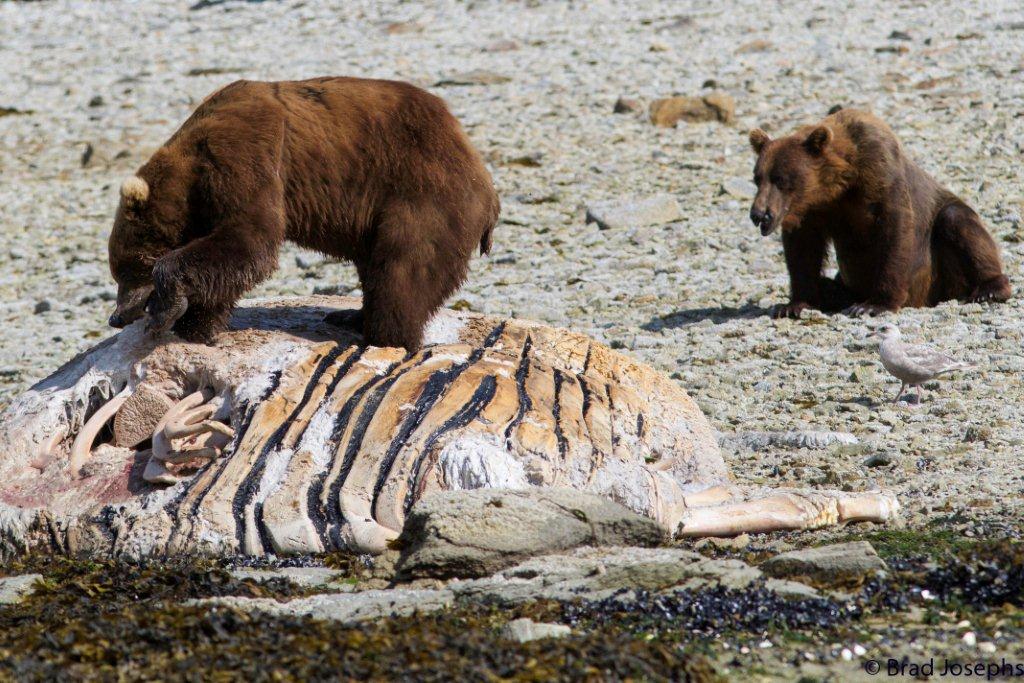
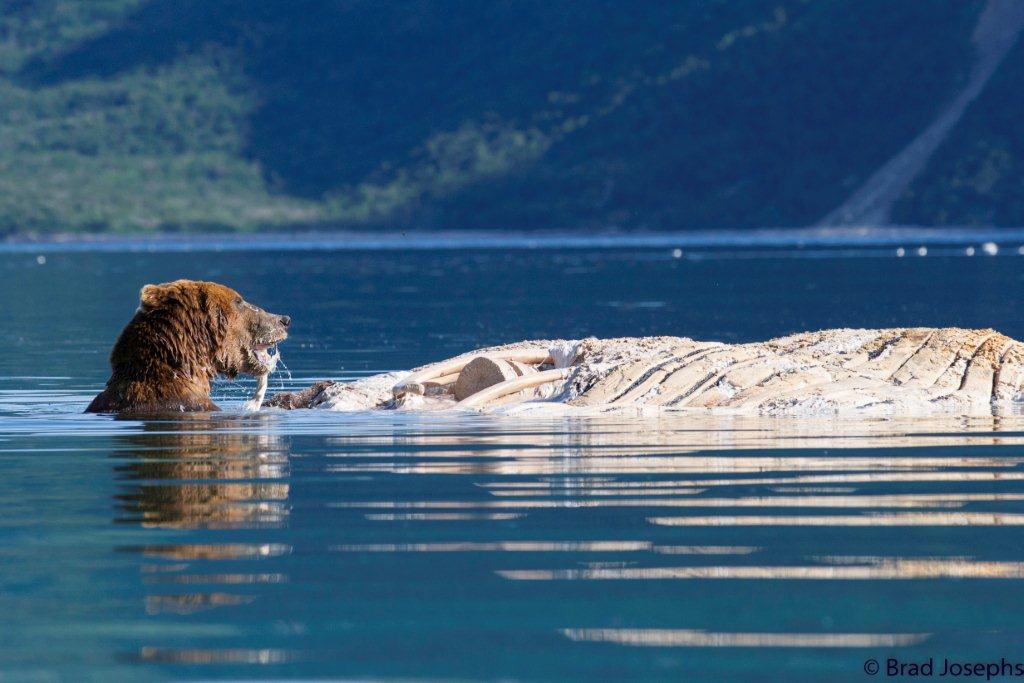
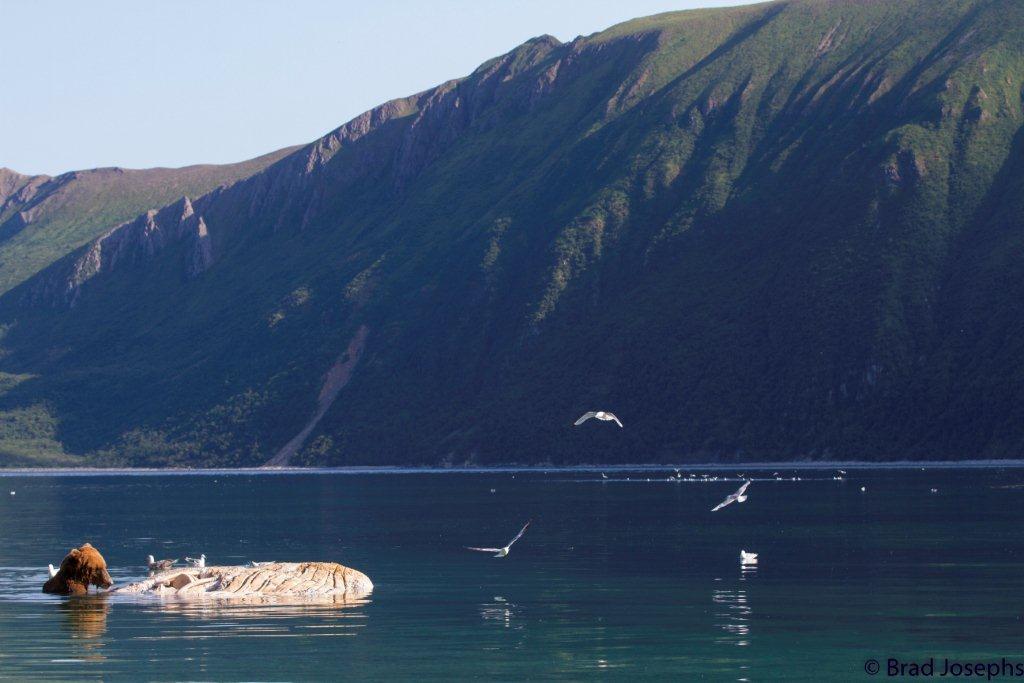
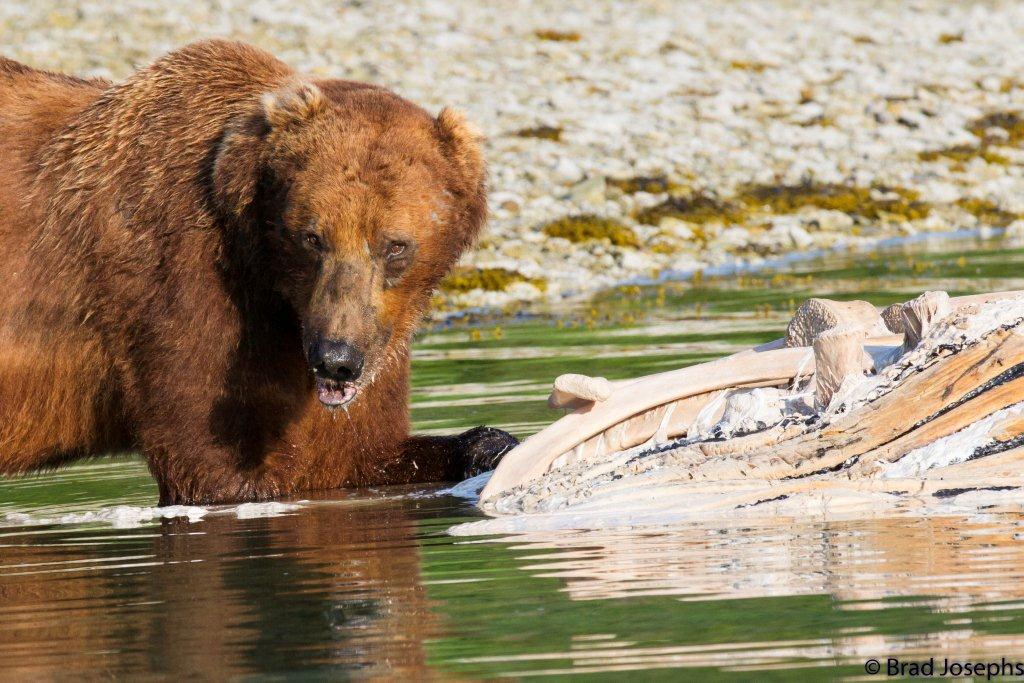
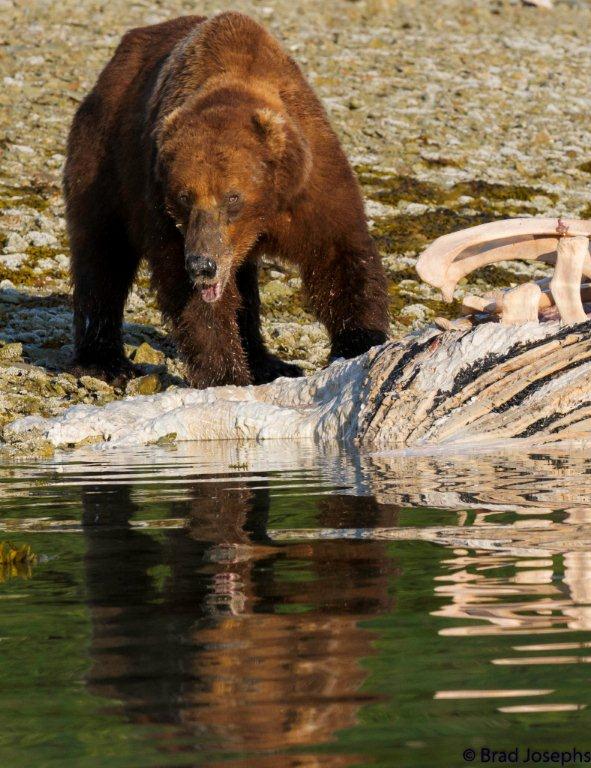
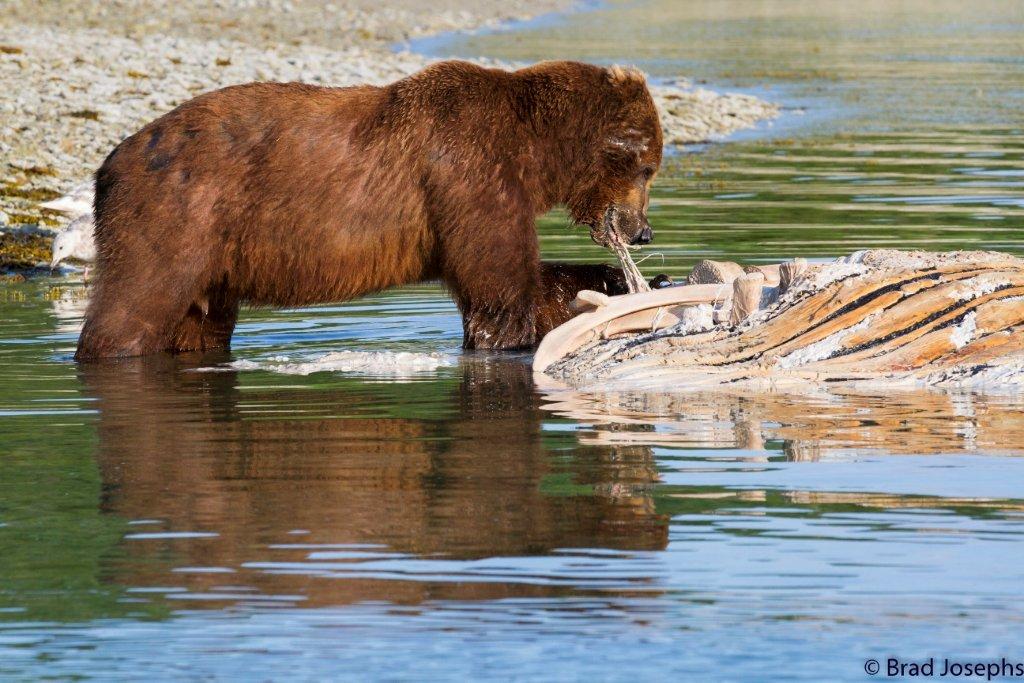















5 Comments
Good stuff Brad. Proud to have been part of the Bradley Bunch once again
hey thanks art! you guys saw the best of the best!
a lot of things here that you could wait a very, very long time to ever see in one incredible place. another new favorite post.
Awesome post Brad. Thanks for sharing all the details.
I was lucky enough to spend just a couple of sessions on what was left of the same carcass with my group!
That was a special event for sure.
Wow! Just wow.
The two male bears look exhausted after fighting.